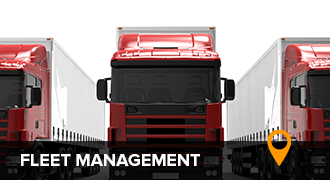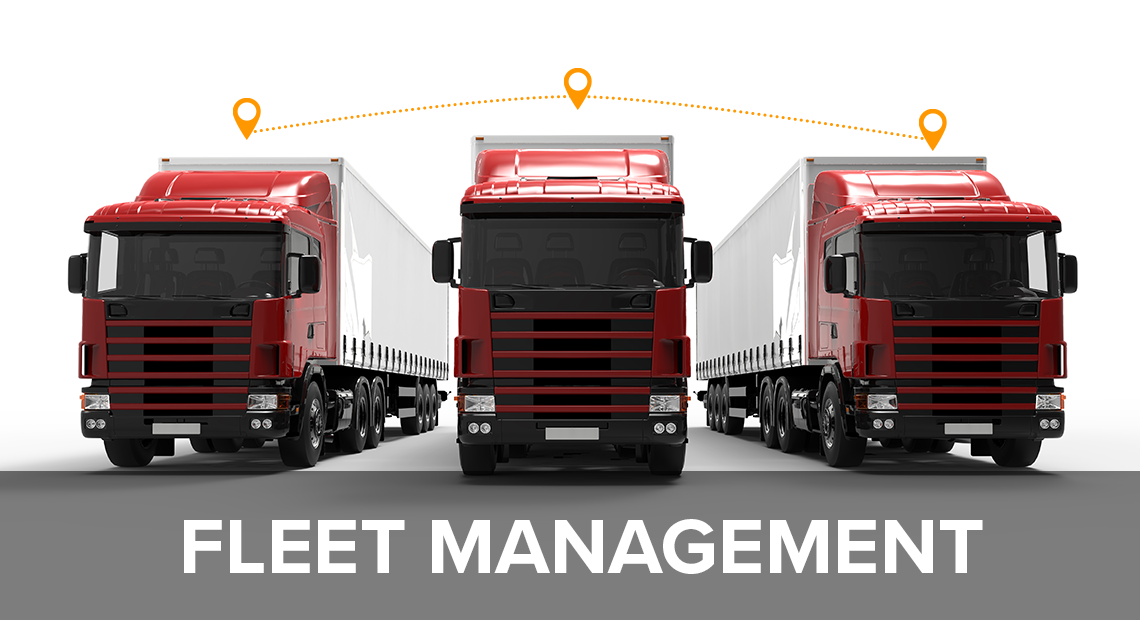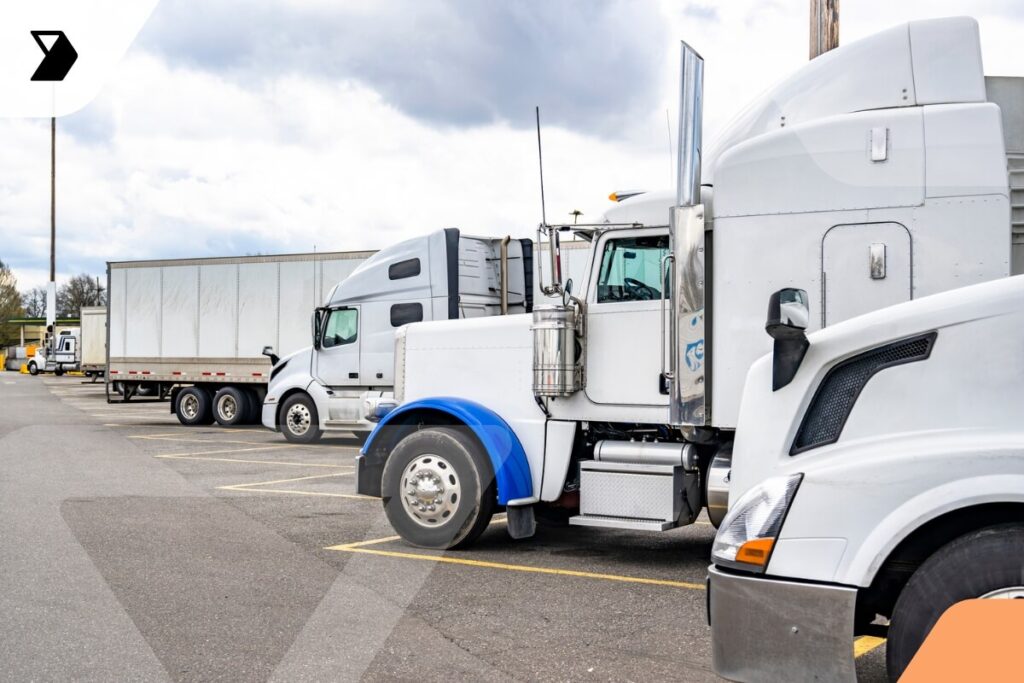How to Justify the Cost of Fleet Management Software
Fleet management software — everyone's talking about it.
Ready to transform your supply chain?

While your business is so much more than just your bottom line, finances are an integral part of every business decision, especially if you’re operating on a smaller budget.
February 26, 2020

Whether you’re a fleet manager pitching the idea to your boss or you own a small transport and logistics (T&L) company and are trying to pitch the idea to yourself, you may wonder how to justify the cost of fleet management software.
But there comes a time for every business when there’s an apparent rising demand for your services. There’s the problem. Your bottom line is in decent shape, but your staff and fleet resources are maxed out meeting the current demand. Expanding to meet additional need will require an investment that, right now, you might not be able to afford. And that’s always a scary decision to make.
Fortunately, growing your business doesn’t always require an investment in labor and the salaries that accompany it. Many T&L companies are using digital tools, including fleet management software, to maximize their efficiency—with no additional hires.
Sounds too good to be true, right? Adopting fleet management software requires an investment on your part, but it’s well worth it.
In this post, we’ll discuss the benefits of adopting digital tools, which will help you justify the cost of fleet management software.
What Does Fleet Management Cost?
Software aside, let’s start by talking about how much it costs to manage a fleet. As you’re well aware, there are a lot of expenses you need to take into consideration here. Your costs are, of course, unique to you. But here are a few common variables in the cost of fleet management.
Overhead Costs
Without delving into business-side or warehousing costs, here are a few overhead costs that directly link to your fleet management:
- Salaries or contract fees for your employees, both for drivers and administrative employees such as fleet managers and accounts payable specialists
- The cost of your vehicles, whether you buy or lease them
- Insurance payments on your vehicles
Operational Costs
Your operational costs will most likely go into taking care of your fleet. Operational costs are typically your most unpredictable expenses. Here are a few big variables you need to account for:
- Fuel costs, which fluctuate with the economy and can also change depending on delays and your drivers’ habits
- Unexpected detention or layover pay for your drivers
- Maintenance costs
- The cost to replace vehicles before they depreciate too much or after an accident
So, now that you know which expenses go into fleet management, let’s see how much fleet management software costs.
What Does Fleet Management Software Cost?
The cost of fleet management software varies by product and depends heavily on your organization’s needs. A freemium option might work for some companies but not others. That’s why it’s critical to start by knowing what services you need.
Typically, fleet management software providers use a monthly subscription model. They price their offerings in tiers, with an average starting cost of around $99 per month. With increased features and services, the cost of these software options increases accordingly. In some cases, fleet management software can cost several hundred dollars each month. And for maximum benefits, you can invest in fully customizable software. For more information on T&L software options and how companies price them, check out this post.
Now let’s talk about some of the ways fleet management software can help you optimize your processes and reduce costs.
Benefits of Adopting Fleet Management Software
Let’s say you’re on a particularly tight budget and don’t want to or can’t afford to invest in a full-service, top-tier software option. Investing in a lower-priced tier with fewer features can still bring significant benefits to your organization. To justify the cost of fleet management software, you need to know how it’s affecting your organization on a number of levels.
Optimize Operational Costs
As you know, operational costs are typically your least predictable expenses. So, it makes sense that fleet management software’s greatest value is in helping you prepare for and mitigate those costs. Some software options specialize in a particular area, such as route planning. Again, take a look at your organization as a whole to determine what will give you the most benefits.
Route Planning
Does your current route planning process consist of putting a start and end position into Google Maps and choosing the shortest route? Then you should consider adopting fleet management software that has a route planning function. This software is designed with T&L companies in mind and often features GPS tracking and real-time updates on traffic conditions. So if there’s a delay ahead, the software will reroute your driver to the next best option. This ensures you don’t waste fuel, you don’t waste your driver’s time sitting in traffic, and your product keeps moving.
Tracking, Tracing, and ELD Compliance
GPS isn’t just good for real-time route updates. With the right fleet management software, you can also use it to track and trace a given delivery. Having that information will give you peace of mind, and you can also use it to enhance your customer service with shipment updates. (We all know that satisfied customers are more likely to use your service again and recommend it to others.)
Also, fleet management software can give you deeper insight into how your drivers are spending their time. This may also help you with electronic logging device (ELD) compliance. For example, drivers can now log their hours with digital timestamps as proof of ELD compliance. Plus, fleet management software with an ELD feature can help you plan routes that will optimize time spent in transit while also planning for necessary rest stops.
Trip Metrics and Reports
In addition to all of the above, mobile technology allows you to automatically gather all sorts of data about your trips. You can collect information on driver habits, traffic delays, and other metrics.
If your fleet management software is mobile compatible, then you can install it on your drivers’ phones so you have access to details, such as when a vehicle is stopped or speeding, you would otherwise be blind to. This gives you insight into whether any of your drivers waste time on the road or have bad driving habits that could be costly for your organization. And you can analyze those metrics to figure out where your drivers and your delivery process could be more efficient.
Streamline Administrative Processes
The benefits of fleet management software don’t stop at helping optimize your operational expenses. They extend into your office as well. A fleet management software add-on like Vector seamlessly connects your resources on the road with your employees at your home base.
With features that include mobile capture, automated billing, and more, you no longer have to wait for your drivers to come back to the office to start processing delivery documents and details. Your drivers can send invoices, proofs of delivery, and details related to their trips in real time. Plus, Vector’s technology ensures that document scans are of high quality. That way your accounts payable specialist doesn’t have to waste time squinting at blurry or illegible text. With all delivery-related information at their fingertips in an instant, your employees at the office can devote their time to more important initiatives in your organization.
Fleet Management Software Optimizes Resources to Reduce Costs
We’ve only covered the basics of how fleet management software can benefit your organization. In some cases, the benefits we talked about will save your organization money. In others, they won’t affect your existing expenses, but they’ll optimize the resources associated with those expenses so they’re doing the most for your organization.
When justifying the cost of fleet management software, you need to look at the big picture. Your organization is unique, so your needs and how fleet management software can help are, too. But hopefully, at this point, you have a better idea of how to justify the cost of fleet management software.
This post was written by Kristin Rawlings. Kristin is a writer, editor, and fierce advocate of the Oxford comma. She has experience working in journalism, academic publishing, and content marketing. Her passion is for reading and creating well-researched texts, as well as collaborating with others to share information in a clear, readable way.
Continue reading
Ready to transform your supply chain?
Increase efficiency and productivity. Say goodbye to delays, handwriting errors, and time-intensive manual data entry.



